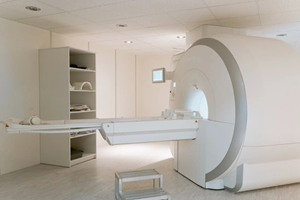Unit 2: Lesson 2: Types of Care
Lesson 2: Types of Care

Lesson 2: Types of Care
Careers in health science can be categorized according to the position's relationship with patients or the delivery of healthcare—some positions in health science deal directly with patients. In contrast, other positions may focus on conducting laboratory research. Although we can categorize health science careers in this way, it is essential to recognize that all healthcare system areas must work together to function efficiently and effectively.
Primary Care
Have you ever visited a nurse or a doctor regarding an illness? If so, you've interacted with the primary care system of healthcare. Primary care refers to the health services professionals who work in a community and provide the first point of care and consultation for local patients. Primary care professionals include family physicians, general practitioners, nurse practitioners, physician's assistants, nurses, pharmacists, and others who provide that first line of care for individual patients. Primary care can include treatment when a person is ill and preventative care to keep people healthy.
Two significant characteristics of primary care are that it has the most comprehensive scope within medicine and healthcare and cares for the most crucial number of people. Primary care, as the first line of care, involves many illnesses and diseases. A family physician or nurse practitioner may see patients for routine check-ups and conditions such as asthma, infections, diabetes, and hypertension. In many cases, when a person thinks that they may be ill or have a medical issue, they first go to a primary care professional. As such, primary care professionals must have a wide range of knowledge of medicine and health to help their patients.
The second characteristic of primary care is that it involves seeing the broadest range of patients. Primary care professionals often work with adults, children, healthy individuals, sick individuals, and people from almost every walk of life. This means that primary care professionals must be prepared for and skilled at interacting with many people throughout the day.
Secondary Care
People who are diagnosed with an illness may visit a secondary care professional. Secondary care involves medical specialists and urgent emergency care. Patients may sometimes see a secondary care professional, such as a cardiologist or dermatologist, after first seeing a primary care professional. They may then be referred to a secondary care professional for more expert and specialized knowledge or treatment. Secondary care also involves emergency care in emergency rooms or other urgent care sites. Professionals at these sites are trained to handle acute illnesses and injuries.

Although many secondary care professionals work in hospitals, at least sometimes, not all do. Psychologists and psychiatrists, for example, may own private practices outside of the hospital setting. Occupational or physical therapists may also work in settings outside of the hospital environment.
Tertiary Care
Tertiary care is sometimes defined as very specialized care, and it often deals with inpatient care for patients at sites providing advanced treatment and research. Tertiary care may be provided at specialized sites that focus on one or more illnesses or diseases. For example, some hospitals focus on the study and treatment of cancer. Psychiatric hospitals are another form of tertiary care.
Hospital Room
As the care level becomes more specialized, fewer people will likely encounter or need it. For example, only patients with a psychiatric illness would be treated at a psychiatric hospital. A hospital focusing on neurological issues would treat patients with neurological illnesses rather than treat a wide range of people with many diseases and illnesses.
Quaternary Care
The term quaternary care is sometimes used to describe highly specialized or experimental care. Due to its nature, this type of care is generally offered at a minimal number of sites. For example, some quaternary care may include special research studies or programs run by health scientists. These sites also serve the smallest percentage of people compared to other care types.
Care and Professions
The four types of care that we've discussed are all potential career areas for health science professionals. It may help to know whether you'd prefer to work with a wide range of people and illnesses or if you'd prefer working with a smaller number of patients and focusing on a particular illness or disease. Some health science professionals prefer to research or treat specific illnesses they have seen or experienced themselves or through people they know. Others may treat many diseases within a hospital emergency room or in a family physician's office. Thinking about the type of care you want to be involved in can help steer you to the area of the health sciences that best suits your interests.
